Stories
Love MY Heritage

Badan Warisan Malaysia’s Love MY Heritage campaign aims to discover, collect and archive Malaysians’ valuable memories, which include personal, social, and historical, with the aim of sharing them with the world and thus promoting the idea of shared heritage. Everyone has their own version of heritage that they hold on to. It would be riveting to learn, hear and read the people’s stories and how they see heritage as part of their lives.
Love MY Heritage intends to invoke nostalgia and memories of heritage within individuals or groups that happened in the past either the heritage still remain until now or it’s been demolished, abandoned or faded. Heritage can be tangible or intangible, tangible refers to things that we can store or physically touch, for example, traditional clothing, tools, buildings, artwork, and monuments. Intangible heritage refers to things that are not physical items but exist intellectually, for example, oral traditions, rituals, beliefs and skills to produce traditional crafts.
This campaign focuses on Malaysian Heritage, parallel with its name where ‘MY’ is the abbreviation of Malaysia and as indication that the heritage is “ours”. Heritage is inclusive of features belonging to our diversified culture, such as traditions, languages, or buildings that were created in the past and still have historical importance. Heritage is the sum total of our memories, experiences, records, artifacts, and traditions that we have inherited. Heritage has brought together people from different levels and diverse backgrounds; Malaysia has been and continues to be a melting pot for diversity.
We invite you to participate and share the stories of your Malaysian heritage with us by submitting digital photos with a caption via the designated online platform. Selected entries will be shared on our online and social media platforms; featured photos that receive the most number of likes will receive a prize.
PARTICIPATION GUIDELINES
- Follow Badan Warisan Malaysia on Instagram and/or Facebook (Like & Follow).
- Submit the photo(s) with details that must include:
- Date of photo (e.g. year or MM/YYYY or c1960 means circa 1960)
- Location of photo (e.g. town & state)
- Description or story of photo (e.g. what is in the photo, what is it about, who is in it)
- Name (full name of participant)
- Participant’s IG handle (if any)
- #hashtag suggestion (one only)
- Pictures taken at any time are welcomed – No limit or specific period of time
- Each photo /series of photos MUST be accompanied by an anecdote or story or just a few sentences about the photo and/or the individuals/place within the image.
- Each photo must have a minimum resolution of 400 dpi in JPEG or PNG format.
- Unlimited entries per participant allowed.
- Submit your entries HERE.
Click HERE to read the Terms and Conditions. By submitting entries in this campaign, participants confirm that they have read, understood, and agree to the terms and conditions.
If you have any enquiries, please email lovemyheritage@badanwarisan.org.my.
#LoveMYHeritage #HeritageMalaysia #OurHeritage #OurStories #BadanWarisanMalaysia #Malaysia #Nostalgia #Memories
UPDATE:
Love MY Heritage is now an ongoing campaign and we no longer limit entries to photographs taken before the 1980s, so pictures taken at any time are welcomed!
This entry was posted in Save My Heritage, Stories and tagged Love MY Heritage.
Let’s Talk Heritage: Relocate and save but risk losing its authenticity? Or keep in-situ and risk losing it altogether?

“Salinger House” Paroi, Negeri Sembilan. (2019)
The fundamental guiding principle in the most established of heritage charters, such as those championed by the International Committee of Monuments and Sites (ICOMOS), is the belief that locating a heritage building or structure from its original setting to a new site destroys its authenticity.
While there does not seem to be much discourse on this issue in Malaysia, expansive plaudits and acclamation have been forthcoming from established leaders in the Malaysian heritage arena for some recent projects which saw heritage buildings being relocated to new sites.
These include the so-named Rumah Pusaka Chow Kit a.k.a. “Rumah Degil”, was moved (2018) a distance of around two (2) km, and now sits snug between Balai Seni Negara’s main gallery building and its administrative annex block in Kuala Lumpur; and the “Salinger House” originally located in Bangi, Selangor (built 1985-1992), and which is in the last stages of being reconstructed in its new home near Seremban, Negeri Sembilan. This is a result of the house being sold a few years ago to its current owners after the land on which it was originally located was sold separately for redevelopment. Then there is the case of the century old Kampong Teluk Memali mosque being moved (2017) from the banks of the Perak River near Kampong Gajah to a new housing development in greater Ipoh, Perak. In 2004, the “Alma Baker house”, a two-storey (part brick and part timber) building masonry and timber house was dismantled in Batu Gajah, Perak, and reassembled in Setiu, Terengganu around 2010. And over 20 years ago Badan Warisan moved the Rumah Penghulu Abu Seman a much further distance, over 300km, from Kedah to Kuala Lumpur.

Rumah Pusaka Chow Kit a.k.a. “Rumah Degil”, in front of Balai Seni Negara’s main gallery building, Kuala Lumpur. (2019)
Add to this list the many other heritage buildings, too many to name, which have been “saved” because they have been relocated. It is perhaps timely for the many professionals and preservationists who fight to protect and safeguard our heritage resources to get together to discuss this issue. Should relocation be eschewed except in exceptional circumstances such as when there is no other option for saving the structure, and if not relocated, it will cease to exist? Should one wholeheartedly embrace this practice and promote adapting and relocating an existing building to meet changing economic and social needs in today’s society or is the cultural heritage significance of a building wholly bound to its original setting?
Mind you, the costs and risks of relocating a heritage building should not be underrated. Past experience has shown that this is an expensive exercise and that great care and much planning has to be put into place to ensure that the fabric of the building will not be damaged, and the new context within which the structure is moved is one which will offer as good, if not better, opportunity for the cultural heritage significance of the structure to be enhanced.
Badan Warisan would be very interested to hear from our readers on what could or should be the way forward. Please email lensa@badanwarisan.org.my if you would like to participate in a round-table discussion on this.
Elizabeth Cardosa
President of Badan Warisan Malaysia
This entry was posted in Opinions, Stories, Uncategorized and tagged Balai Seni Negara, Heritage Conservation, Relocation and Restoration, Rumah Degil, Rumah Pusaka Chow Kit, Salinger house.
Legends of the Secret Tunnel of Malacca by Dennis De Witt

ABOUT THE TALK
Dennis De Witt will share the tales of the subterranean tunnels under the historic town of Malacca that has existed for over a century. There were stories of a tunnel under St. Paul’s hill and how people had gone into these tunnels but were never to be seen again.
This talk will give an overview of the book. What secrets do the tunnels contain and why were people willing to risk their life by descending into the dark and unknown orifices below Malacca? Is there lost treasure still buried in Malacca? This book uncovers the layers of history that unfold Malacca’s most bizarre and amazing legend. He will share pictures of Malacca and the historic St. Paul where the tunnel is, some of which are featured in the book. A book sale will also be held after the talk.
ABOUT THE AUTHOR

Dennis De Witt, a management consultant in Kuala Lumpur, is a 5th generation Dutch Eurasian originally from Malacca. He has a keen interest in subjects relating to the history of Malacca and Dutch influences in Malaysia.
Over the years, he has participated, spoken and presented papers in various academic, private and public seminars and events organized by the Malaysian National Archives, and the Royal Netherlands Embassy in Malaysia, the Malacca Museums Corporation, the Institute of Occidental Studies at UKM, Taylor’s University Lakeside Campus, the Institute of Southeast Asian Studies and Universiti Teknologi MARA.
He also regularly conducts CTRE training for the Kuala Lumpur Tour Guides Association and speaks to the volunteers’ group at the National Museum. He has contributed articles for the Journal of Malaysian Biographies and written articles for various newspapers and magazines.
He has published several books, including ‘Reconnecting Through Our Roots’ (2006), ‘History of the Dutch in Malaysia’ (2007), ‘Melaka from the Top’ (2010), ‘Historical Tombstones and Graves at St Paul’s Hill Malacca’ (2016). In 2009, he was named the winner of the ‘Dutch incentive prize for Genealogy’ for his book ‘History of the Dutch in Malaysia’ and he received his prize in the Netherlands. He was the first-ever recipient of the prize who is not a Dutch citizen. His latest publication is entitled ‘Legends of the Secret Tunnels of Malacca’ was just released in 2018.
This entry was posted in Stories, Talks & Lectures and tagged book, culture, Dennis De Witt, History, legend, Malacca, St.paul, talk.
Brickfields: As Witness by Mano Maniam
ABOUT THE TALK
Brickfields is a diverse neighbourhood with dozens of religious institutions, schools, associations as well as social and welfare organizations within a square mile, all with a history of more than a century. It is in serious threat of rapid change and is at odds with its own past and its future.
Brickfields: As Witness explores the changing image of this neighbourhood through Mano’s eyes. He fears that Brickfields will no longer reflect that colour and become just a giant communication “go-to/come-from place”.
This narrative will also uncover the stories he has experienced as an inmate of this colorful suburb.
ABOUT THE SPEAKER
 An actor, director, teacher and voice over artist, Mano Maniam is well known for his roles as Uncle Chan in the local TV series ‘Kopitiam’ and as Moonshee in Hollywood’s ‘Anna and the King’.
An actor, director, teacher and voice over artist, Mano Maniam is well known for his roles as Uncle Chan in the local TV series ‘Kopitiam’ and as Moonshee in Hollywood’s ‘Anna and the King’.
As a cultural anthropologist, he is curious on examining how cultures merge, collide and intertwine. Brickfields has become the center of his curiosity and observation.
Having lived in Brickfields for over 30 years, Mano has seen the land and peoplescape change, unsure of its destiny.
This entry was posted in Stories, Talks & Lectures and tagged actor, arts, book, brickfields, Buildings, director, heritage, History, KL Sentral, kuala lumpur, Mano Maniam, past, ThisKulCity.
Betel Boxes- Symbol of Wealth, Status & Social Standing
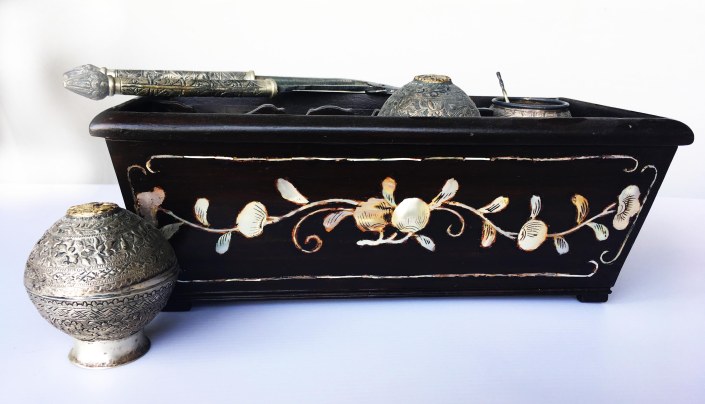
The habit of betel chewing is believed to have started way back into the Neolithic Age, and for a long time, it was thought to be native to India because of several literary references including a Pali text dating from 504 BC describing this practice. Recent linguistic studies and archaeological finds, however, point to another origin, i.e., southeast Asia.
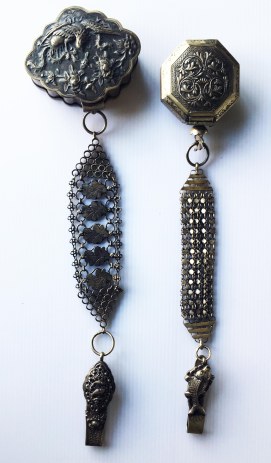
This conclusion is based on the discovery of traces of the piper betel seeds found in various caves in Thailand and Indonesia dating back to 5,000- 7,000 BC and the discovery of a male skeleton with betel-stained teeth in the Duyong caves in the Philippines dating back to 2680 BC. This habit (betel chewing) spread to cover a large area which included mainland southeast Asia, the Indian subcontinent, Sri Lanka, Indonesia, Papua New Guinea and Micronesia and a custom which was enjoyed by both men and women.
Over the years several accounts of the habit have been written by countless travellers and writers including references to betel and areca in Chinese accounts which date back to the 7th century. They believed that the betel and areca had many medicinal qualities most popular being that of a mouth freshener and it was said that its popularity in China only declined with the introduction of opium in the 19th century. In the “The Travels of Ibn Buttute” in the 13th century he described how he was welcomed by a plate of betel leaves and areca nuts on arrival at the palace of the Sultan of Mogadishu, clearly indicating its association with hospitality.
The foreigners were fascinated and at the same time repelled by the black teeth and the red saliva describing the habit as vile and disgusting, but the habitual users considered these very same things as beautiful. Chewing betel which is a mild narcotic evokes a mild euphoria and a general feeling of well-being. The British anthropologist, Tom Harrison claimed that a few minutes of betel chewing after an hour of hard climbing in Sarawak sent waves of energy through his body.
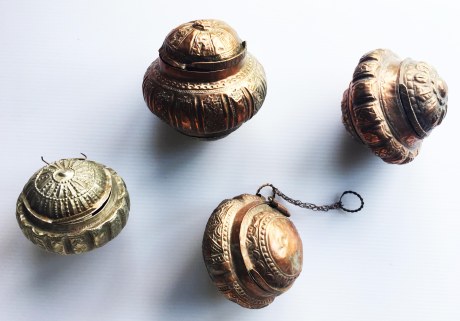
There are three main ingredients necessary for betel chewing, the betel leaf (from the piper betel vine), lime (from limestone or crushed incinerated sea shells) and the areca nut. One starts with the betel leaf to which the lime is smeared, and a few slivers of areca nut added. The leaf is neatly folded into a small parcel which is called a quid or a “chew” and then popped into the mouth between the gum and the cheek. The Malays add gambir as a fourth ingredient which is said to enhance the flow of saliva, but its primary export value was for tanning leather. Tobacco and spices can also be added depending on taste and custom.

A receptacle was therefore required to house and transport the different ingredients mentioned above, and the Betel Box was born. This can be in the form of boxes, trays, baskets, and bags, fashioned out of silver, gold, brass, bronze, lacquer, wood, ceramic, glass, textile, etc. The shapes and sizes vary to reflect preference gradually becoming a status symbol to indicate the wealth and social standing of its owners.
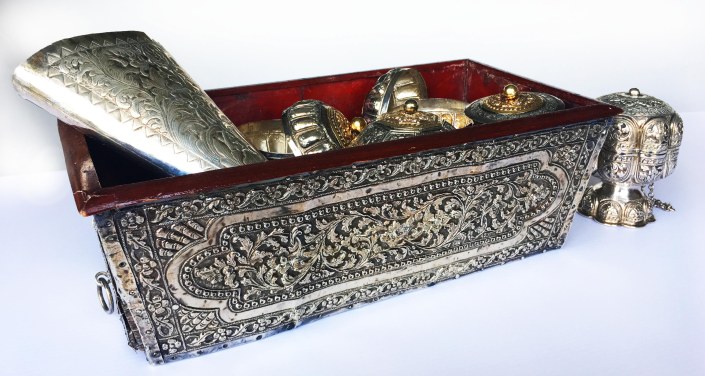
The grandest usually made of gold were reserved for royalty, and this then became part of the royal regalia in countries such as Burma, Thailand and the Malay sultanates. Over time the popularity of betel chewing waned, and when Malaya became independent from the British in 1957, the betel box was excluded from the royal regalia because it was considered old-fashioned. What has remained is its association with respect and hospitality in Malay custom and tradition and the Betel Box, therefore, plays an important role especially in Malay weddings
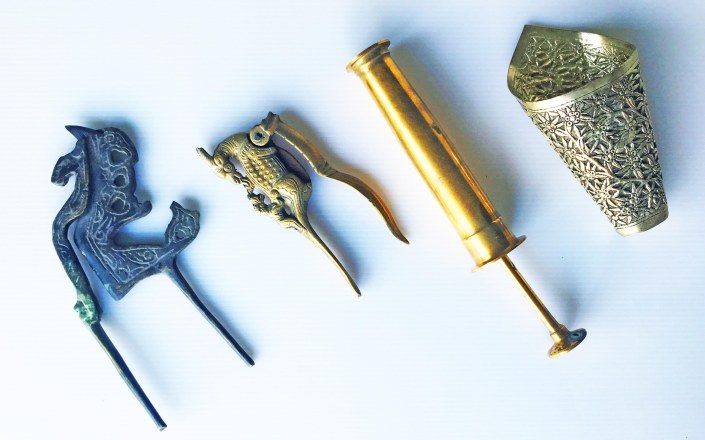
From what was described as an “unlovely practice” by Sir George Scott we have fortunately been left with a very rich inheritance of beautiful Betel Boxes and the various wonderful paraphernalia which were necessary for betel chewing. These include the betel cutters, tobacco boxes, spittoons and mortars which the elderly and toothless needed to pound the ingredients.

This post is written by Puan Zuraidah Ghani, long-time member of Badan Warisan Malaysia and avid collector of Betel Boxes, otherwise known as Tepak Sirih in Malay.
This entry was posted in Opinions, Stories and tagged Architecture, asia, betel box, betel boxes, betel leaf, culture, Indonesia, southeastasia, Sulawesi, tepak sirih, thailand.
Manek Mischiefs by Lee Su Kim
ABOUT THE TALK
Lee Su Kim will share her experiences writing a trilogy of stories of the Peranakans, focusing on her latest work. After Kebaya Tales and Sarong Secrets, comes Manek Mischiefs, a rich, gutsy collection of short stories immersing the reader into the flamboyant, vibrant and colourful world of the Babas and Nyonyas. The babas take centre stage this time, masculine perspectives are put under the spotlight as themes of family intrigues and rivalries, loss of great fortunes, bedroom scandals, long lost love, identity issues and family relationships are explored.
Lee Su Kim, a sixth generation nyonya, will talk about the babas and their stories from an insider’s perspective and her cultural heritage facing the challenges of modern times. She will discuss the joys and pitfalls writing about a multi-layered, hybrid culture with Chinese, Southeast Asian and European influences. She will share pictures of exquisite beadwork and embroidery items ( manek) and personal belongings of the babas, many of which are featured in the book. The session ends with a reading by the author of one of her favourite stories.
ABOUT THE AUTHOR
 Dr.Lee Su Kim has published eleven books of fiction and non-fiction. Her debut collection of the life-stories of the Peranakans, Kebaya Tales: Of Matriarchs, Maidens, Mistresses and Matchmakers won First prize in the Popular-Star Readers’ Choice Awards 2011(Fiction). She published another collection, Sarong Secrets: Of Love, Loss and Longing in 2013.
Dr.Lee Su Kim has published eleven books of fiction and non-fiction. Her debut collection of the life-stories of the Peranakans, Kebaya Tales: Of Matriarchs, Maidens, Mistresses and Matchmakers won First prize in the Popular-Star Readers’ Choice Awards 2011(Fiction). She published another collection, Sarong Secrets: Of Love, Loss and Longing in 2013.
Her earlier work, Malaysian Flavours: Insights into Things Malaysian and Manglish: Malaysian English at its Wackiest are bestsellers. She also wrote on the hilarious crosscultural encounters between east and west in A Nyonya In Texas: Insights of a Straits Chinese Woman in the Lone Star State.
Su Kim was Associate Professor of English language studies at Universiti Kebangsaan Malaysia where she lectured and published widely on language, culture and identity. She is the chief editor of ‘Border Crossings : Moving between Languages and Cultural Frameworks’.
An invited speaker at both the Ubud and Singapore Writers Festival, she has given talks and presentations in the US, UK, Australia and Asia. Su Kim is also a cultural activist and is the Founding President of the Peranakan Baba Nyonya Association of Kuala Lumpur & Selangor. She enjoys and shares cultural complexity beyond cuisine and sarong kebaya and is a frequent presenter of the rich diversity of being nyonya. She is now a fulltime writer, educationist and language consultant.
This entry was posted in Stories, Talks & Lectures and tagged baba nyonya, book, Chinese, European, Lee Su Kim, Maidens, Malacca, Manek Mischiefs, Southeast Asian, UKM.



